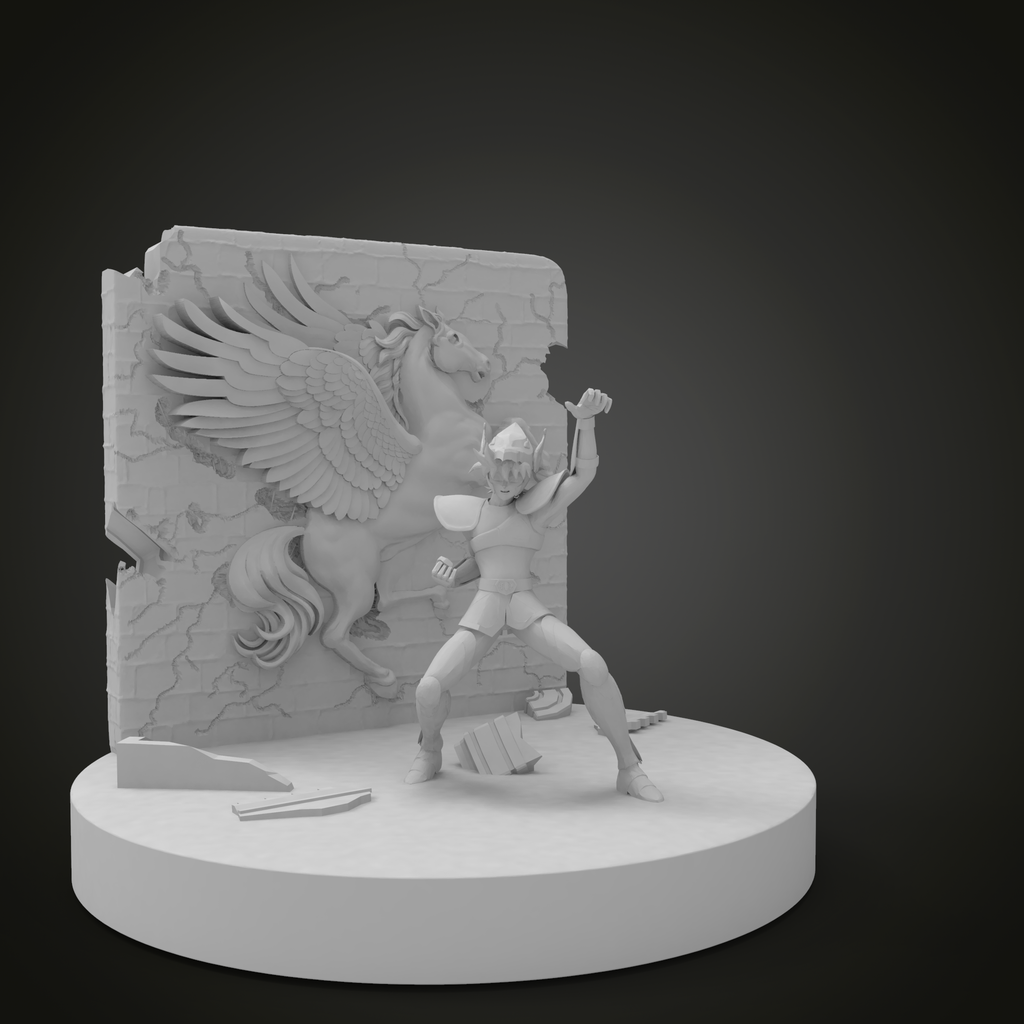
Pegasus diorama Pinterest Seiya Knights of the Zodiac Life Size Figure Statue
thingiverse
Pegasus is a mythical winged divine horse and one of the most recognized creatures in Greek mythology. Depicted as pure white, Pegasus is the offspring of Olympian god Poseidon and Gorgon Medusa after her death at the hands of hero Perseus. He is the brother of Chrysaor and uncle of Geryon. Pegasus was caught by Greek hero Bellerophon near the fountain Peirene with the help of Athena and Poseidon. Pegasus allowed Bellerophon to ride him to defeat the monstrous Chimera, leading to many other exploits. However, Bellerophon fell from Pegasus's back while trying to reach Mount Olympus. Zeus then transformed Pegasus into a constellation. The name Pegasus is derived from the Greek word "pēgē," meaning spring or well. Hesiod presents an etymology of the name as related to the springs of Oceanus, where Perseus found Medusa. A proposed etymology suggests that the name Pegasus comes from Luwian words "pihassas" and "Pihassassi," referring to a weather god with thunder and lightning. Dr. Michael Brown suggests that the word "Pegasus" is a pre-Celtic-PIE word, not evolving into common names in Greek or Western languages. Pegasus's relationship to "Cyrillic" is discussed further in his work on Phrygian Monikers and the Naming of Greek Pronunciation. According to legend, wherever Pegasus struck his hoof to the earth, a spring burst forth. One such spring was upon Mount Helicon, the Hippocrene, opened by Poseidon to prevent the mountain from swelling with rapture at the song of the Muses. Another spring was at Troezen. Hesiod relates how Pegasus peacefully drank from a spring when Bellerophon captured him. There are several versions of the birth of Pegasus and his brother Chrysaor in the far distant place at the edge of Earth, where Perseus found Medusa. One version holds that they sprang from the blood issuing from Medusa's neck as Perseus beheaded her. Another version states that they were born from the Earth, fed by the Gorgon's blood. A variation of this story implies that Poseidon had involvement in their making. Bellerophon riding Pegasus (1914) Silver Denarius of Domitian with Pegasus on the reverse. Dated 79–80 AD. Pegasus, as the horse of Muses, on the roof of Poznań Opera House (Max Littmann, 1910) Bronze figurine (Greece, 6th century BC)
With this file you will be able to print Pegasus diorama Pinterest Seiya Knights of the Zodiac Life Size Figure Statue with your 3D printer. Click on the button and save the file on your computer to work, edit or customize your design. You can also find more 3D designs for printers on Pegasus diorama Pinterest Seiya Knights of the Zodiac Life Size Figure Statue.
